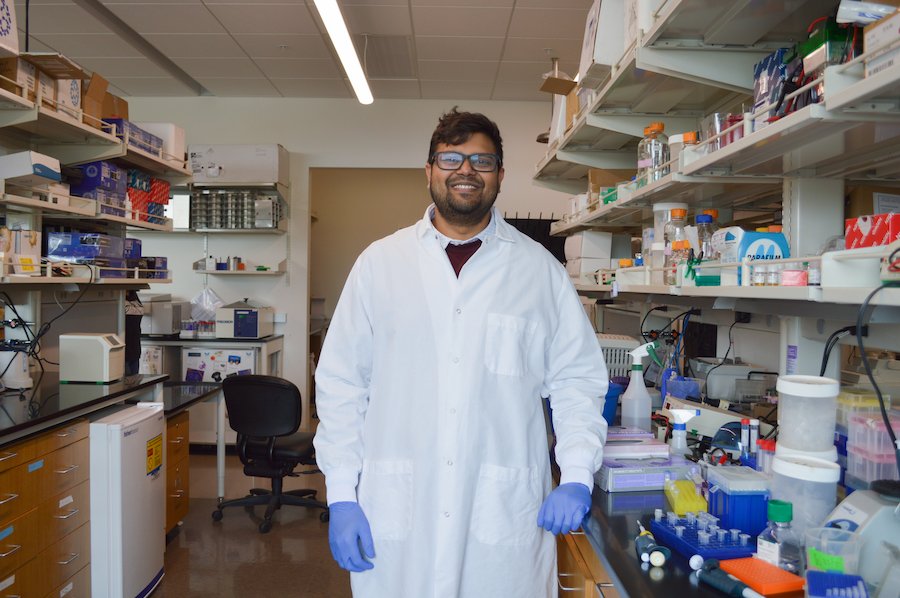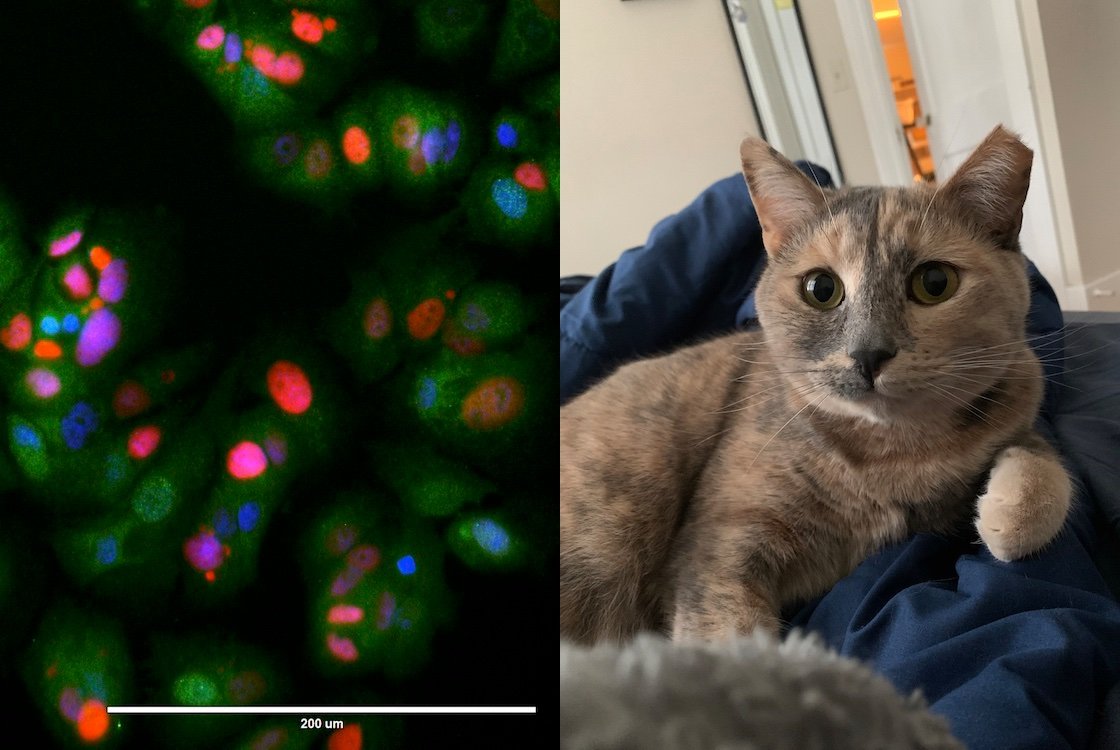Phenomenon behind cats' fur patterns may hold key to cancer recurrence

CSE Ph.D. student Harish Venkatachalapathy’s research could lead to better treatments for breast cancer
October 17, 2022
Ever since Harish Venkatachalapathy was an undergraduate student studying chemical engineering, he wanted to integrate his engineering knowledge with biology. After taking a class on modeling variability in physical and chemical processes, he had the idea to apply this line of thinking to study cancer.
“I like the phrase, ‘A cell is nothing but a very, very miniaturized and extremely complex reactor,’” said Venkatachalapathy, now a Ph.D. student studying chemical engineering at the University of Minnesota Twin Cities and a recipient of the Earling A. Dalaker Fellowship. “You can take these mathematical principles from chemical engineering and put them into a tiny little system that you're trying to understand.”
Venkatachalapathy pitched his cancer research idea to biomedical engineering Professor Casim Sarkar, an expert in cell-decision making processes, and chemical engineering Associate Professor Samira Azarin, an expert in cancer dormancy, during his first week of graduate school. Now, both University of Minnesota professors serve as his co-advisors on the research project.
“There’s a lot of collaboration between different professors at the U,” Venkatachalapathy said. “It’s really amazing—a lot of aspects of my project didn't exist before, but it happened because we had these two professors who have complementary expertise and were willing to advise a student on a completely new project.”
On a deeper level, what Venkatachalapathy studies is called “cellular noise,” which refers to fluctuations in the rates of biochemical processes within cells that can arise from random collisions of the molecules involved. This phenomenon gives rise to “variability” in some cells, causing some of them to behave differently even though they are genetically identical. It’s a common occurrence in breast cancer treatments, where a drug might successfully kill most of the cells in the tumor, but a small number of them become dormant and reawaken months to years later.
Understanding this variability, and eventually being able to control it, could allow researchers to develop better treatments that can kill 100 percent of the cancerous cells.
Making the science more understandable
Interestingly enough, it’s the same randomness in cells during embryo development that create the unique patterns in the fur of tortoiseshell cats.
“In our lab, we're using these ideas of cellular noise and energy landscapes to understand developmental biology,” Venkatachalapathy explained. “That same phenomenon gives us all these pretty coat patterns in cats, and we’re just applying it to something that is not quite so cute.”

Venkatachalapathy actually used photos of his own cat, Luna, to help explain his research in last year’s college-wide Three-Minute Thesis competition, a contest in which graduate students from across the University must pitch their research in an understandable way in three minutes or less. He ended up winning the runner-up prize for his presentation.
Scientific communication is one of the most valued skills that Venkatachalapathy says he gained from his experiences at the University of Minnesota. It’s one he plans to use when he receives his Ph.D. and gets a job in industry.
“That’s what inspired me to do the Three-Minute Thesis competition,” he said.
“The ability to transform scientific concepts into things that people can understand is one of the big things you need to have when you’re in industry, where you might have to interact with your technical team but also explain to stakeholders how it’s going to impact the company.”
Venkatachalapathy is nearing the end of his time at the University of Minnesota, but after he graduates, he will have laid the groundwork for another graduate student to take his place and continue his research. In the future, the researchers hope to know enough about this cellular noise to develop tangible treatments based on it.
Story by Olivia Hultgren
If you’d like to support students in the University of Minnesota College of Science and Engineering, visit our CSE Giving website.
